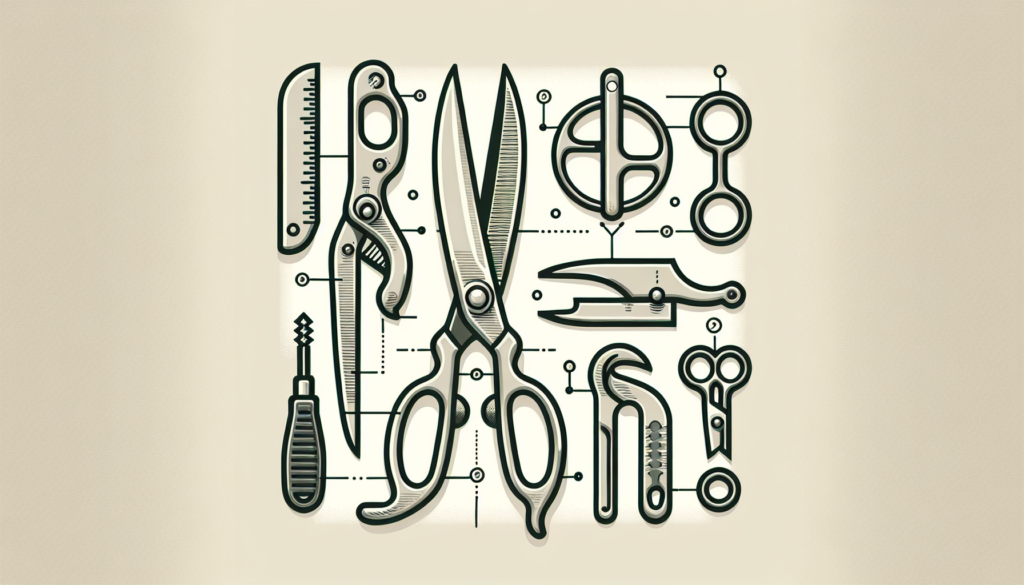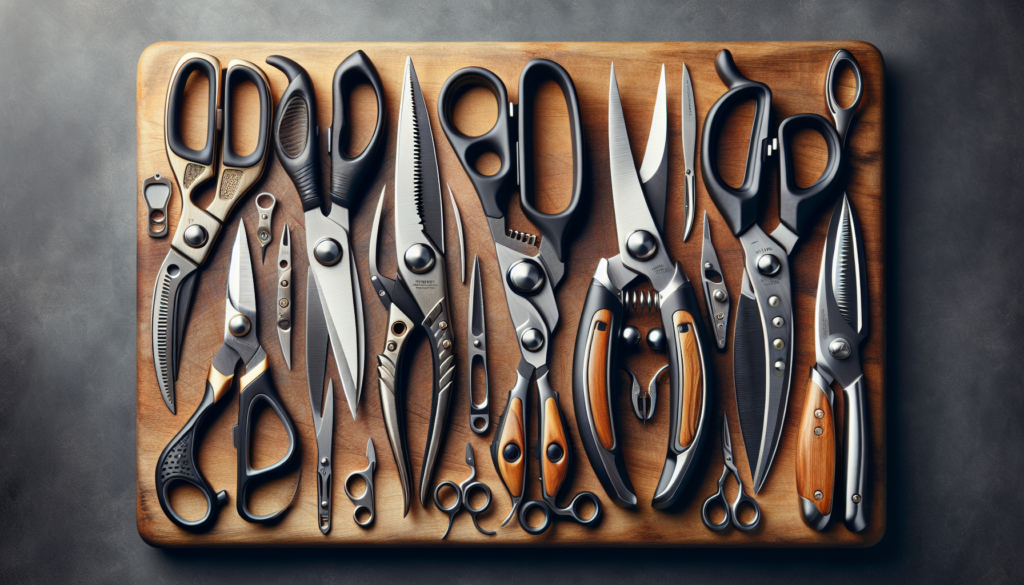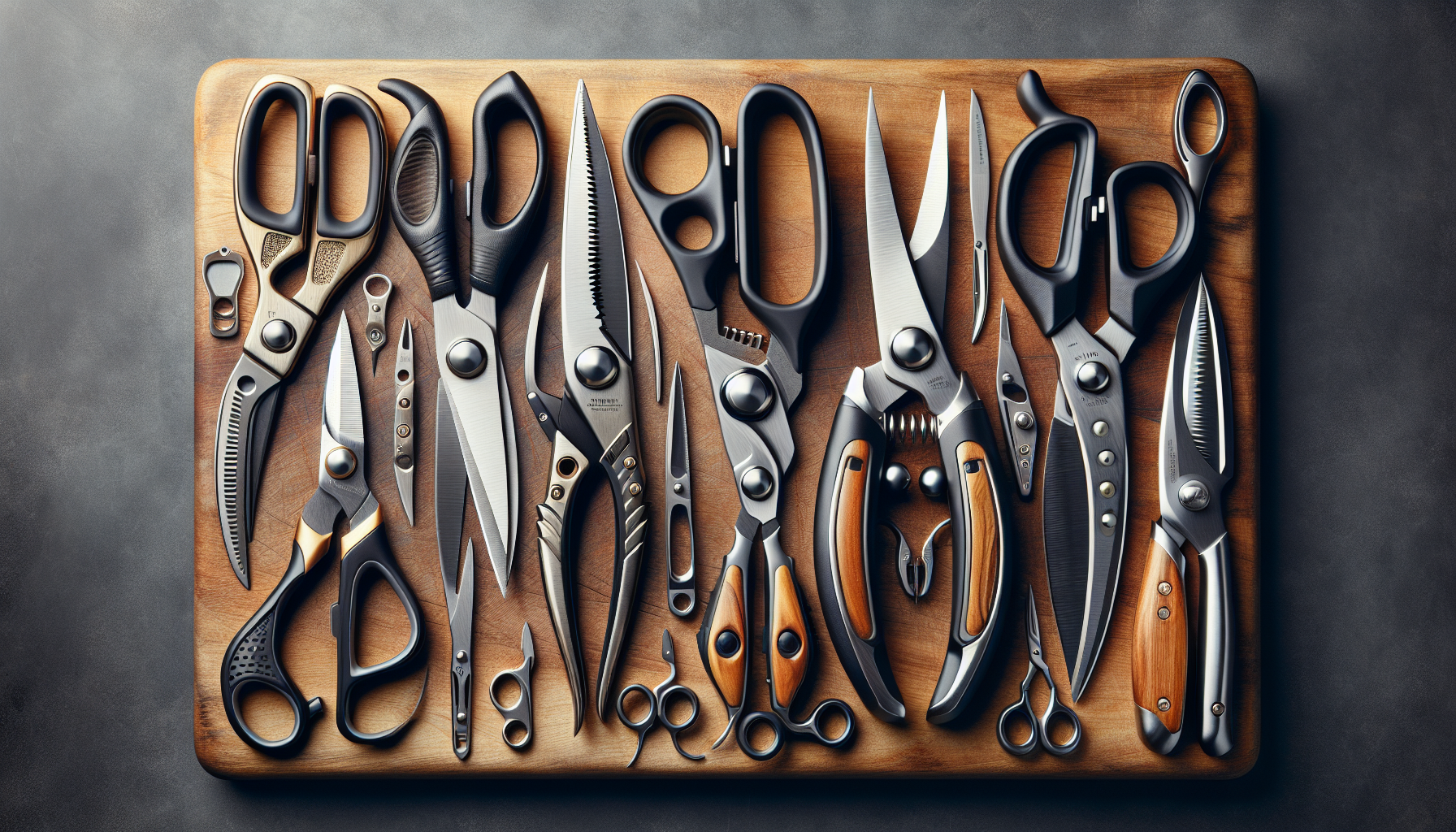Selecting Kitchen Shears For Meat Cutting: What To Look For
Looking for the perfect pair of kitchen shears to make your meat cutting tasks a breeze? Look no further! In this article, we will guide you through the key factors to consider when selecting the right kitchen shears for your meat cutting needs. From blade material and handle design to versatility and durability, we’ve got you covered. So, get ready to upgrade your culinary toolkit and make your meat cutting experience a true pleasure. Let’s dive in and explore what to look for when selecting kitchen shears for meat cutting. Whether you’re a professional chef or a home cook, having the right kitchen shears for meat cutting is essential. With so many options available, it can be overwhelming to choose the best one for your needs. This comprehensive article will guide you through the different factors to consider when selecting kitchen shears, including blade material, length, type, thickness, handle design, purpose, safety features, ease of cleaning, brand reputation, and price range.
Blade Material
The blade material is an important factor to consider when selecting kitchen shears for meat cutting. There are three common types of blade material: stainless steel, high carbon steel, and titanium-coated blades.
Stainless steel blades are known for their durability and resistance to rust and corrosion. They are easy to maintain and suitable for general meat cutting tasks. High carbon steel blades, on the other hand, are extremely sharp and hold their edge well. They are ideal for precise cuts and heavy-duty use. Titanium-coated blades combine the advantages of stainless steel and high carbon steel, offering excellent durability and sharpness.
Blade Length
The blade length of kitchen shears is another aspect to consider. Long blades are typically 6 inches or longer and are suitable for cutting through large pieces of meat, such as turkey or roast. They provide better leverage and allow for clean and effortless cuts. On the other hand, short blades, typically around 4 inches, are more maneuverable and are great for trimming fat or cutting smaller cuts of meat, like chicken breast or bacon.

Blade Type
Kitchen shears come in two main blade types: straight blades and serrated blades. Straight blades are versatile and can be used for a wide range of meat cutting tasks. They offer precision and smooth cutting. Serrated blades, also known as scalloped blades, have teeth-like edges that grip the meat and provide better control when cutting through tougher cuts, such as bone-in meats or crusty bread.
Blade Thickness
The thickness of the blade is an important consideration when selecting kitchen shears for meat cutting. Thin blades are typically found on lightweight shears and are great for delicate tasks, such as trimming fat or cutting herbs. They are also easier to maneuver around bones. On the other hand, thick blades are more durable and suitable for heavy-duty tasks, such as cutting through tough joints or thick cuts of meat.

Handle Design
The handle design of kitchen shears plays a crucial role in ensuring comfort and ease of use. Ergonomic handles are designed to provide a comfortable grip and minimize hand fatigue, making them ideal for prolonged use. Non-slip handles offer a secure grip even when wet, ensuring safety and preventing accidents. Some kitchen shears also feature a pivot screw mechanism, allowing for easy adjustment of the blade tension to suit your preference.
Purpose
Consider the purpose for which you’ll be using the kitchen shears. If you need them for general use, such as cutting through meat, poultry, or even vegetables, a versatile pair that can handle a variety of tasks would be suitable. However, if you have specialized needs, such as deboning or poultry processing, it is advisable to choose shears specifically designed for those tasks to ensure efficient and safe performance.
Safety Features
Safety should always be a top priority when selecting kitchen shears for meat cutting. Look for shears with a locking mechanism that secures the blades when not in use, preventing accidental opening or closing. A finger guard is also a valuable safety feature that helps protect your fingers from accidental slips and cuts during use.
Ease of Cleaning
Cleaning kitchen shears can be a hassle, so it’s important to choose a pair that is easy to clean. Some shears are dishwasher safe, allowing for convenient cleaning alongside your other utensils. Others have detachable blades, which can be easily removed for thorough cleaning. Consider your preferences and choose a design that suits your cleaning routine.
Brand Reputation
Brand reputation is often a reliable indicator of quality and performance. Well-known brands in the kitchenware industry have built their reputation by consistently delivering products that meet customer expectations. Research and read user reviews to gain insights into the performance and durability of different brands and models. This will help you make an informed decision and ensure satisfaction with your purchase.
Price Range
Consider your budget when selecting kitchen shears for meat cutting. There are budget-friendly options available that offer good quality and functionality. These options are suitable for home cooks or those on a tighter budget. If you’re willing to invest in premium features and superior craftsmanship, high-end options offer the best materials, cutting performance, and durability. Choose a price range that aligns with your needs and preferences.
In conclusion, selecting the right kitchen shears for meat cutting involves considering factors such as blade material, length, type, thickness, handle design, purpose, safety features, ease of cleaning, brand reputation, and price range. By taking these factors into account and understanding your specific needs, you’ll be able to find the perfect pair of kitchen shears to enhance your meat cutting experience. Happy cooking!

